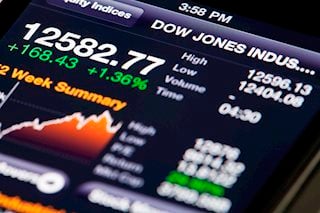Why this buffett stock has consistently beaten the market
|
One of the things famed investor Warren Buffett looks for in a company is an “economic moat,” a term he popularized long ago that essentially refers to a nearly impenetrable competitive advantage. In other words, with a moat around your business, you are protected from competition; thus, you are able to maintain leadership and grow your market share.
One of the largest holdings in Buffett’s Berkshire Hathaway (NYSE:BRK.A) (NYSE:BRK.B) portfolio is Moody’s (NYSE:MCO), and not surprisingly, it has one of the widest moats around. Let’s examine its advantages and why it should be able to maintain them.
An impenetrable moat
Few companies have a moat like Moody’s, which is one of only three major credit-rating agencies in the country. Moody’s, along with S&P Global (NYSE:SPGI), are the two dominant players in this space with about 82% market share between them, with each roughly equal in size. Fitch Ratings is a distant third with a market share of approximately 13%, with several other smaller players making up the remaining 5% of the market.
That’s not to say that the big three will forever dominate the market, but there are some key differences in this space that make it more challenging. First, Moody’s has a well-known brand and a solid reputation, and credibility is everything in rating bonds and credit.
Second, it is not an easy market to penetrate, as there are many regulatory hurdles that credit-rating agencies have to go through, so that has the effect of limiting competition. Third, it is not a space that needs more than a few reliable standards. Otherwise, the ratings would start to become watered down and hold less weight in the marketplace.
These factors all entrench Moody’s as one of the far-and-away leaders in this industry, and it would take some massive failures for the firm to lose its dominance.
A long-term winner
Moody’s results speak for themselves, as the stock has been a consistently high performer over the years. Over the last 10 years as of Nov. 8, Moody’s has posted an average annual return of 16.6%, which easily surpasses the S&P 500’s 9.5% annualized return over that same stretch. If you go back to its inception as a public company in 2000, Moody’s has returned about 13.2% per year, which dwarfs the S&P 500’s annualized return of 7.8% since then.
While it has been remarkably consistent over the years, the stock is not immune to dips, as its earnings and revenue will suffer when debt issuance drops like it has over the past two years. Last year, debt issuance fell some 40% compared to 2021 and by almost 60% from the highs in 2020. Higher interest rates have been the primary culprit. According to Moody’s, credit issuance is up some 18% through the first three quarters this year, including the 12% gain in Q3. While that’s a good sign, it’s off of recent historic lows in 2022.
Do you know which under-the-radar stocks the top hedge funds and institutional investors are investing in right now?
However, what makes Moody’s an attractive stock is its other business, Moody’s Analytics, which provides data and analytics to corporations and institutional investors. This business has been growing steadily over the years, and in these last few difficult years, it has generated more revenue than the credit-ratings business.
In Q3 for example, Moody’s Analytics generated $737 million in revenue, up 6% year over year, while Moody’s Investor Services recorded $733 million in revenue, an 11% decline. It is a business that tends to do well when the markets are floundering, as clients are looking for trends and advantages that can help them when things turn.
Thus, these two divisions make Moody’s a strong company — even when credit issuance is down. With interest rates likely to remain high for a while, the near-term outlook for credit markets may not improve much. However, Moody’s is a stock that is built for the long term, as its performance over the years has illustrated.
Information on these pages contains forward-looking statements that involve risks and uncertainties. Markets and instruments profiled on this page are for informational purposes only and should not in any way come across as a recommendation to buy or sell in these assets. You should do your own thorough research before making any investment decisions. FXStreet does not in any way guarantee that this information is free from mistakes, errors, or material misstatements. It also does not guarantee that this information is of a timely nature. Investing in Open Markets involves a great deal of risk, including the loss of all or a portion of your investment, as well as emotional distress. All risks, losses and costs associated with investing, including total loss of principal, are your responsibility. The views and opinions expressed in this article are those of the authors and do not necessarily reflect the official policy or position of FXStreet nor its advertisers.